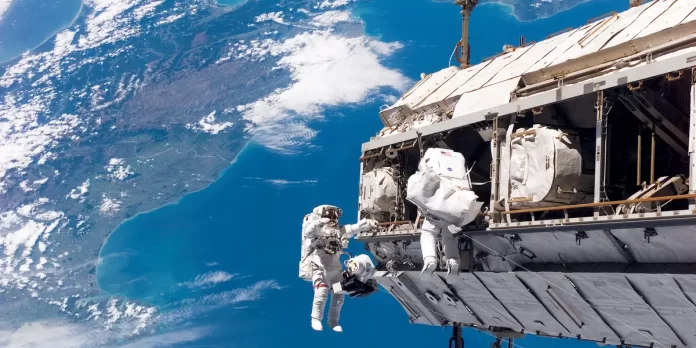SpaceX, in collaboration with NASA, will use an enhanced Dragon capsule to safely deorbit the International Space Station (ISS) and guide it to a controlled reentry, burning up in the atmosphere and plunging the remnants into the ocean. This plan, outlined on Wednesday, aims for the ISS to reach the end of its mission by early 2031, marking its 32-year milestone. NASA has awarded SpaceX an $843 million contract for this mission, the largest structure ever built off-planet.
Also Read: SpaceX’s Streak Ends: Falcon 9 Grounded After Mission Failure
Why Retire the ISS?
The ISS, launched in 1998 and continuously inhabited since 2000, is showing signs of aging. The multinational collaboration, involving contributions from Russia, the U.S., Europe, Japan, and Canada, has grown to the size of a football field with a mass nearing 1 million pounds (430,000 kilograms). NASA anticipates the station’s operational life until at least 2030, after which private companies are expected to launch their own space stations, allowing NASA to focus on lunar and Martian exploration.
Challenges of Bringing It Back to Earth
NASA considered dismantling the ISS and returning its parts to Earth or allowing private companies to salvage them. However, the station was not designed for disassembly in orbit, making the process risky and expensive. Boosting the ISS to a higher orbit was also dismissed due to logistical challenges and the risk of creating space debris.
Deorbit Strategy
The ISS is regularly boosted to maintain its 260-mile (420-kilometer) altitude. Without these boosts, it would descend uncontrollably. NASA plans to ensure a controlled reentry over a remote oceanic area, likely the South Pacific or Indian Ocean. A specially equipped spacecraft will dock with the ISS and steer it towards this location, ensuring any surviving debris lands safely.
SpaceX’s Deorbit Spacecraft
SpaceX will modify a Dragon capsule, similar to those used for ISS resupply missions, to handle this task. The upgraded capsule will feature a larger trunk with 46 engines and over 35,000 pounds (16,000 kilograms) of fuel. This robust spacecraft will guide the ISS during its final descent, resisting atmospheric drag forces. The Dragon capsule will be launched approximately 18 months before the ISS’s planned deorbit, with astronauts aboard as it gradually lowers the station’s altitude. Six months before the scheduled reentry, the crew will return to Earth, and the Dragon capsule will complete the deorbit process.
Historical Precedents
NASA’s first space station, Skylab, reentered Earth’s atmosphere in 1979, with debris landing in Australia and the Pacific. Russia’s Mir space station was successfully guided to a controlled reentry in 2001, setting a precedent for deorbiting large space structures.
Preserving ISS Mementos
NASA intends to save small, significant items from the ISS for museum display, including the ship’s bell, logs, and panels with patches. These mementos will be returned to Earth via SpaceX supply missions in the station’s final years. Despite the desire to preserve more substantial parts, NASA’s Ken Bowersox emphasized the practicality of a single, controlled deorbit to ensure a safe and efficient end to the ISS’s mission.



